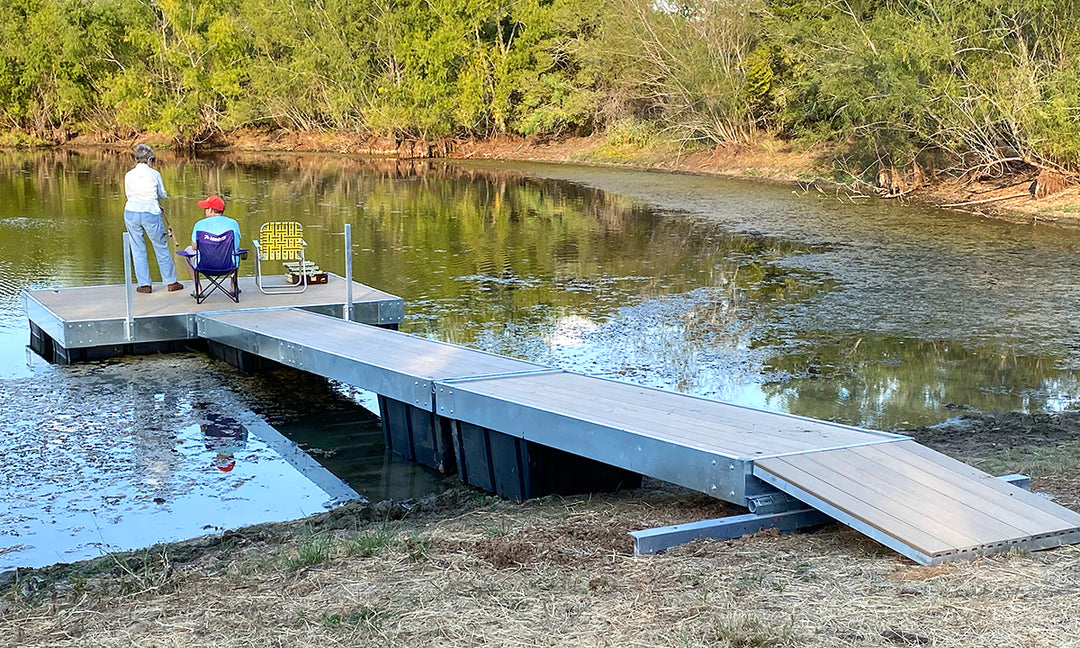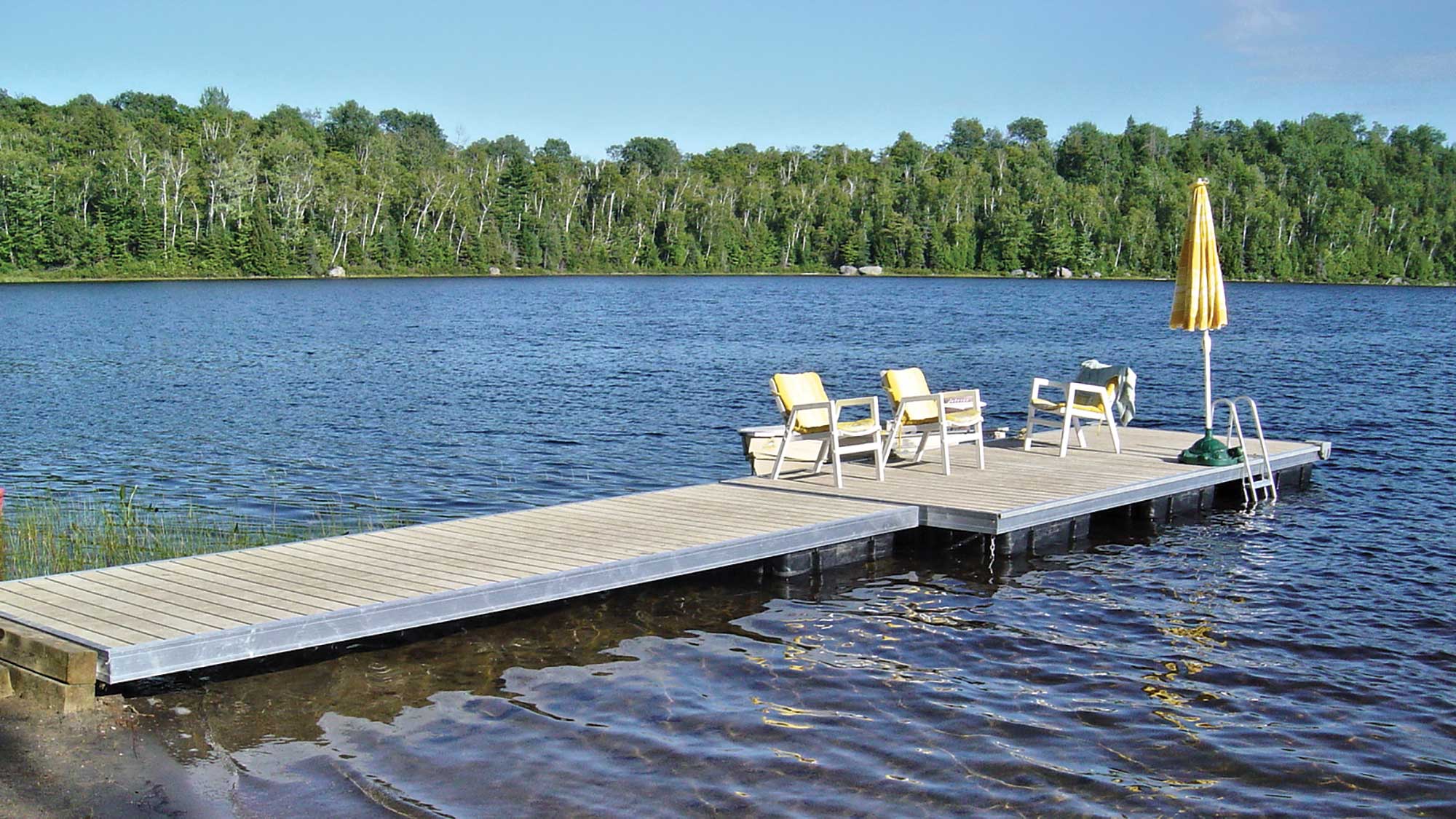Check out the Variety Of Floating Dock Providers Designed to Suit Every Boater's Demands
Check out the Variety Of Floating Dock Providers Designed to Suit Every Boater's Demands
Blog Article
Develop the Perfect Docking Remedy With Floating Docks
Floating docks existing a flexible solution for a selection of maritime demands, adjusting perfectly to varying water levels and diverse vessel kinds. Their modular nature permits fast installment and relocation, yet the choice of ideal products and layout attributes is critical for making sure both functionality and visual appeal. As we explore the necessary components that contribute to the effectiveness of floating docks, a number of crucial aspects pertaining to stability and maintenance will certainly emerge, questioning regarding just how to maximize your docking experience. The succeeding conversation will certainly brighten these essential considerations.

Advantages of Floating Docks
Floating docks offer many advantages that make them an excellent option for numerous maritime applications. One of the main benefits is their flexibility to altering water levels. Unlike repaired docks, floating docks rise and fall with the tide, making certain consistent accessibility for vessels. This function is especially vital in locations susceptible to considerable tidal fluctuations or seasonal water level adjustments.
Additionally, floating docks are usually simpler and quicker to install compared to traditional set structures. Their modular style enables simple assembly and disassembly, assisting in maintenance and moving when required. This versatility is specifically beneficial for momentary applications or in atmospheres where conditions may change.
Floating docks likewise have a tendency to be a lot more eco friendly, as they decrease disturbance to the seabed and surrounding aquatic ecosystems. Their resilient nature reduces the danger of damage to marine life, promoting a healthier environment. These docks can be customized to fit numerous vessel dimensions, ensuring that they satisfy details functional needs.
Ultimately, the combination of versatility, convenience of installment, and environmental factors to consider makes floating docks a highly effective remedy for a vast array of maritime needs.
Selecting the Right Materials
Choosing the suitable materials for floating docks is crucial to ensure stability, sturdiness, and longevity. The option of materials straight impacts the dock's performance in various ecological conditions, consisting of direct exposure to water, sunshine, and prospective wear from aquatic web traffic.
Usual materials utilized for floating docks include aluminum, wood, and high-density polyethylene (HDPE) Aluminum is lightweight, corrosion-resistant, and calls for marginal upkeep, making it a superb selection for long life. Its initial expense can be higher contrasted to other materials.
Wood, while visually appealing and giving a standard appearance, can be susceptible to rot and bug damage otherwise properly treated. Consequently, using pressure-treated timber or normally resilient species like cedar or redwood can alleviate these problems.
HDPE is a popular selection as a result of its resistance to UV rays and chemicals, together with being eco-friendly. dock company. It is offered and light-weight in various shades, permitting customization
Inevitably, the appropriate material selection will certainly depend on particular requirements, including budget plan, wanted visual appeals, and ecological considerations. Cautious analysis of these factors will certainly lead to a successful and resistant floating dock option.
Design Factors To Consider for Security
When designing floating docks, ensuring stability is a basic facet that can substantially influence their functionality and safety and security. Security in floating dock style is influenced by various elements, consisting of buoyancy, weight distribution, and the arrangement of parts.
Weight distribution is critical; evenly distributing lots across the dock avoids tilting and improves stability. Larger designs can use boosted stability, specifically in harsh water conditions, while longer docks might call for extra assistances to protect against drooping.
Another essential factor to consider is the environmental impact, including wave action and wind. Integrating functions such as sidewalls or skirting can aid alleviate the effects of environmental forces, preserving security in negative conditions. Inevitably, a combination of thoughtful layout, product option, and understanding of ecological variables will yield a drifting dock that fulfills both stability and security requirements.
Setup Tips and Techniques

Next, protect the essential authorizations and comply with local policies, which might determine installation methods and ecological considerations. If required, engage a qualified service provider experienced in floating dock installations. Use top quality materials created for marine environments to enhance sturdiness and longevity.
When positioning the dock, align it identical to the shoreline to promote very easy accessibility. Make sure that the anchoring system is robust, utilizing cinder block or helical supports to stabilize the dock against wind and wave action. It's critical to represent seasonal water degree variations, consisting of prospective ice motion in chillier climates.
Throughout the installment, verify the dock's floatation and stability prior to wrapping up the anchoring. Frequently anchor examine the installment for any type of indicators of wear or damages. By following these methods and pointers, you can achieve a safe, practical, and aesthetically pleasing floating dock installment that fulfills your demands.
Upkeep and Treatment Standards
Caring and maintaining for floating docks is important to prolonging their lifespan and making sure risk-free usage. Routine evaluations ought to be carried out to determine any type of indicators of wear, damage, or marine growth. Look for splits, loose fittings, or blemished locations on the dock's surface, as these problems can compromise structural integrity.
Cleaning is essential. Utilize a pressure washing machine to get rid of algae, barnacles, and debris, which can accumulate over time. For stubborn growth, take into consideration eco-friendly cleaning agents that will not harm marine life.
In addition, check the mooring lines and anchors frequently to ensure they are safe and free from rust. Replace any type of torn or harmed lines without delay to preserve security.
During severe weather, such as tornados or freezing problems, take preventive steps. Protect the dock with additional mooring lines and, if viable, remove any type of detachable elements to stop damages.
Final Thought
To conclude, the execution of floating docks provides a efficient and functional docking solution suitable for various maritime applications. Their flexibility to changing water levels, integrated with a modular layout, permits simple modification and relocation. Choosing proper materials enhances both durability and aesthetic charm, while careful factor to consider of stability makes certain safety and security and durability. With correct installment and routine maintenance, floating docks can supply trusted and effective docking experiences for her comment is here a variety of vessels.
As we check out the crucial components that add to the effectiveness of floating docks, several crucial aspects relating to security and maintenance will arise, raising questions concerning just how to enhance your docking experience. Unlike dealt with docks, floating docks increase and loss with the trend, guaranteeing regular ease of access for vessels.When making floating docks, ensuring security is a basic facet that can considerably affect their capability and safety. Stability in floating dock design description is affected by various elements, including buoyancy, weight circulation, and the arrangement of parts. Inevitably, a mix of thoughtful layout, product option, and understanding of environmental factors will certainly produce a floating dock that satisfies both stability and safety demands.
Report this page